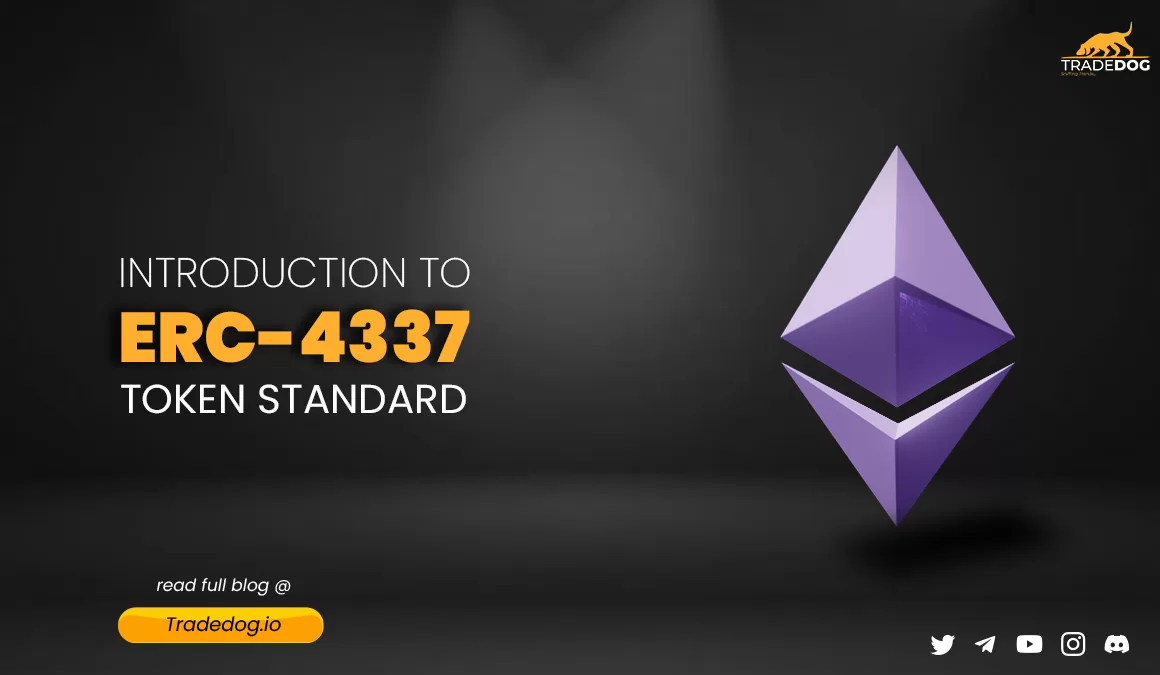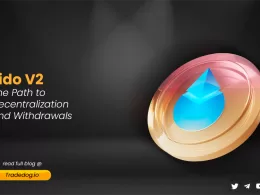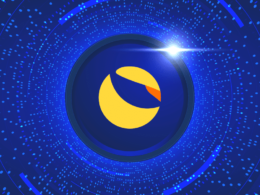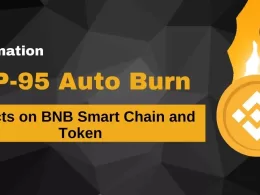Being a flexible and feature-rich blockchain Network, Ethereum enables the execution of multiple dapps via smart contracts. To make the network more scalable, robust, and interoperable, the network has implemented multiple ERC standards (Ethereum Request for Command). ERC-4337, which went live on the Ethereum mainnet in March 2023, enables transactions and contract creation in a single contract account. The goal is to provide access to user-friendly cryptocurrency wallet designs that can encourage wider usage.
ERC-4337 is one of the most avant-garde ERC standards to date. Similar to past token standard releases, it was created to enable new features and options that weren’t possible with the token options that were previously accessible. In easy terms, the upcoming ERC-4337 standard would transform a crypto wallet into a bank wallet with related features integrated into it.
Vitalik Buterin, founder of Ethereum, and Yoav Weiss (Ethereum Foundation security researcher) have said, “It gives you the same features a bank would without having to trust a bank”. Considered a revolutionary step in the history of Ethereum, ERC-4337 would be achieved through Account Abstraction.
What is Account Abstraction?
Seemingly complicated, Account abstraction is a tech-savvy term for something very user-friendly. It is often referred to as “smart accounts”. Essentially, Account abstraction is a technology that allows users to use smart contract wallets instead of EOAs (Externally Owned Accounts), where users have to store cryptographic pairs of keys (public and private keys).
As smart contracts are considered highly flexible in capabilities, ERC-4337 aims to leverage smart contracts integrated with the users’ wallets, making them smart wallets capable of executing multiple things and offering numerous functionalities, the process being termed Account Abstraction.
History of Account Abstraction
The history of Account Abstraction dates back to 2016, when the EIP-86 proposal was rolled out, allowing users to create “account contracts” which could perform any desired signature/nonce checks on transactions rather than using the hard-coded mechanism which was used in transaction processing.
Following it, two proposals were introduced in 2020, the EIP-2938 ~ proposal submitted to create a new transaction type, “AA transactions,” and the EIP-3074 ~ proposal, which would allow users to delegate control of their EOA to a smart contract, allowing any EOA to operate as a smart contract without actually deploying a contract.
However, none of these proposals was merged into Ethereum. These proposals are currently in the “stagnant” category, inactive for over six months. These proposals’ reluctance to be integrated is partially attributable to their call for modifications to the Ethereum network’s consensus-layer protocol.
Until EIP-4337 was put up in 2021, account abstraction on Ethereum was possible without changing the consensus layer.
ERC-4337 Benefits & Use Cases
One of the principal benefits of adoption is that it allows new users to join the decentralized cryptocurrency community without worrying about challenges in storing seed phrases or comprehending the technical steps involved in setting up a wallet. They may easily open a smart account using a smartphone app and a face or fingerprint scanner.
Many cryptocurrency wallets are presently available as smartphone apps. Still, due to their security risks, they are not suited for holding huge funds. Phone wallets are now virtually as secure as hardware wallets thanks to smart accounts, which allow the cryptographic keys to be stored on the hardware security module of the phone.
Account Recovery: Multi-signature wallets in EIP-4337 have social recovery features that simplify login and password authentication. Maintaining private keys is unnecessary, allowing users to recover accounts by writing arbitrary logic codes.
Gasless transactions: ERC-4337 would allow users to pay the transaction fee in different ERC-20 tokens like USDC, MATIC, etc. The block producer would swap them for ETH, ultimately benefitting the users by saving the fee. Moreover, ERC 4337’s paymaster function allows gas-free transactions for some time, giving users improved accessibility and usability. By doing so, transaction fee friction can be lessened, leading to a broader user base adopting cryptocurrencies.
Crypto-based subscriptions: Smart contracts are capable of executing transactions on their own. Through account abstraction, the ERC-4337 aims to enable smart accounts of users to automatically execute transactions coded within the smart contracts on countering specific subscriptions. Therefore, users can use their crypto to make payments for several things like electricity, OTT subscriptions, app purchases, and much more.
User-friendly wallet functions: EIP-4337 aims to enable users to send transactions using short and straightforward Ethereum names rather than lengthy and complicated Ethereum addresses to resolve usability issues. The Ethereum Name Service (ENS) is a human-readable name that users can give to their Ethereum address using EIP 4337. As a result, customers can enter a brief and simple-to-remember name while sending transactions instead of a lengthy string of letters.
Custom Transactions & Bundling: Users can write a code to control the funds, allowing them to bundle up multiple transactions. Particularly traders and gamers will benefit from this since they now have to sign many transactions to complete a single operation. Moreover, the proposal allows users to set up a transaction that involves multiple parties and requires numerous signatures.
ERC-4337 complexities
For its implementation, Smart Accounts would be going live on the Radix Network via Babylon upgrade, which is expected to undergo in a few months. Since a workable implementation of the idea needs to be finished and released, it is still being determined how long account abstraction will take to develop and be adopted on Ethereum. After that is finished, getting the feature into users’ hands will take more time through wallets and other integrations.
ERC-4337 overlays Ethereum with a brand-new, extremely sophisticated architecture to achieve account abstraction. This complexity was unavoidable to prevent some basic features of the Ethereum network’s design that would be too disruptive to change. However, the added system approach poses several new problems related to fragility, inefficiency, and incompatibility.
Closing Thoughts
ERC-4337 will help Ethereum remain one of the top blockchains because of its notable mix of ERC-20 tokens, the popularity of ERC-721 NFTs, and the enormous presence of Ethereum within decentralized finance (DeFi). The improved functionality will benefit all these diverse but connected niches within the larger Ethereum ecosystem.









